Editor’s Note: Bill and Denise Semion are members of LTV’s sponsored content team, The Leisure Explorers. Do you own a Leisure Travel Van and enjoy writing? Learn more about joining the team.
Acoma Pueblo Welcomes You To The Oldest Continuously Occupied Community In North America
It is no secret what Spanish conquistador Hernando de Alvarado thought when he first laid eyes on Sky City, the Acoma Pueblo atop a solid sandstone monolith, in the mid-1500s.
He thought it impenetrable, and in his quest to find the seven golden cities of Cibola for his boss, Francisco Coronado, he noted only one way up, a narrow stairway, ending in hand and footholds carved into the stone, and moved on. The Spanish, however, would be back.
What he missed in his thirst for more New World gold and silver has become a national treasure in more ways than one; when your travels take you to New Mexico, you can experience at Acoma Pueblo (pronounced AKoma), just west of Albuquerque.
A guided visit here — the only way you can see this community — is sure to take you into that past, enthral you with panoramic views, educate you about the ongoing culture here that’s occupied this mesa for more than 11 centuries, and give you more insight into how these and other Native Americans were treated.
And yes, you can still climb that narrow stairway that at one time melted into those single foot and hand holds that made sure no one could ever invade Acoma. People have lived in the area continuously for more than 2,000 years — and in the pueblo for 1,100 — making it the oldest continuously occupied community in North America.
Now, however, you can ride 365 feet up to the top comfortably in a tour bus, and walk the solid sandstone that this city was built on during your next visit to the American Southwest.
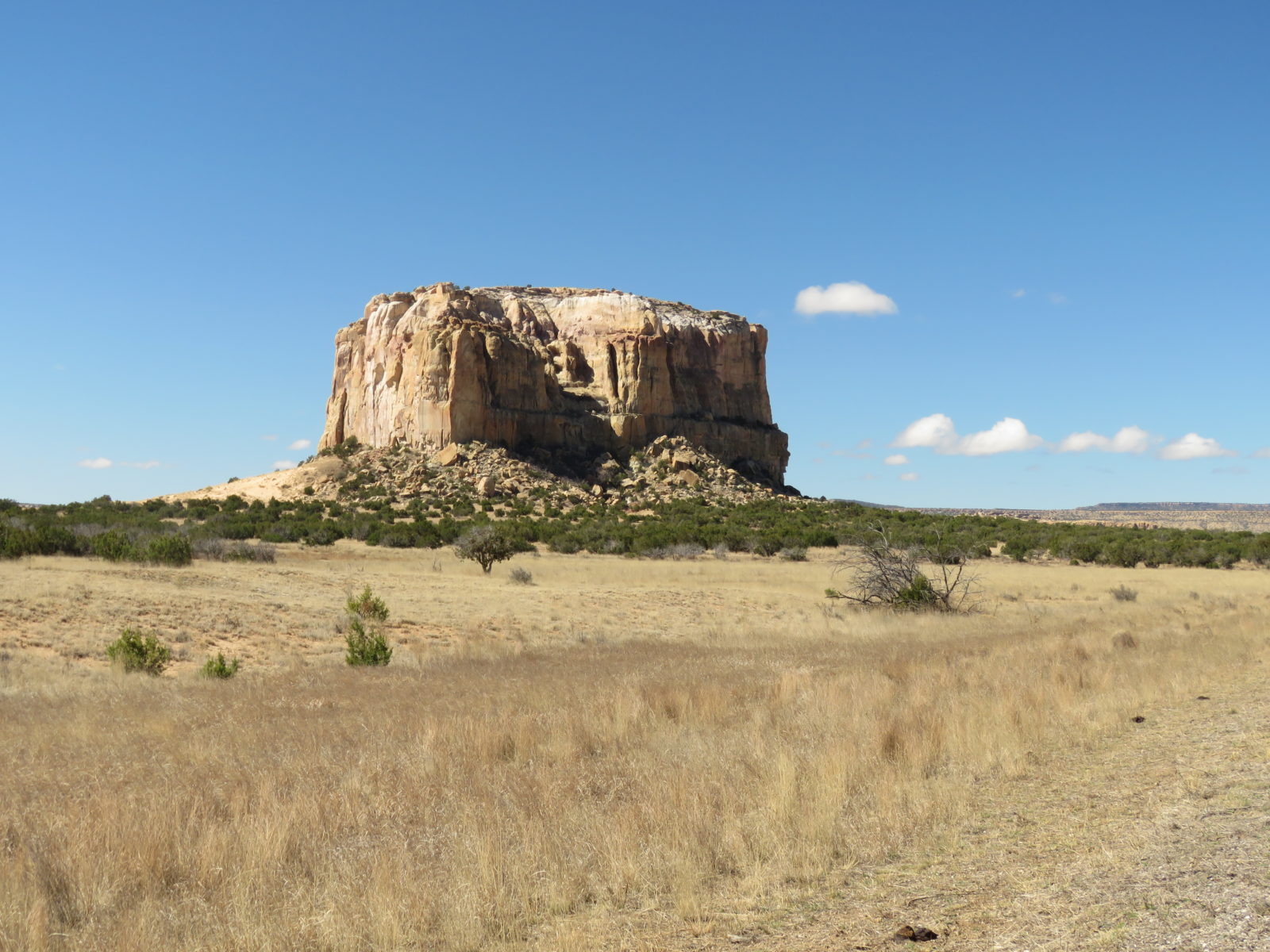
Step out of the bus with your guide and explore the mostly empty streets, and let your guide speak of what was then, and what is now (including the occasional TV antenna poking up from roofs).
According to our guide, this is a matriarchal society. Homes pass down to the women, some of whom have become world famous for their pottery which residents sell. Small seed pots and larger items can sometimes sell for tens of thousands of dollars.
Your guide will also tell you that the inhabitants originally moved here to get away from raiding Apaches and Navajo, and from tribal stories passed down through the centuries, (also perhaps a natural disaster). Each family on the reservation also has a dwelling here, but there generally are less than 40 permanent occupants in the approximately 300 structures.
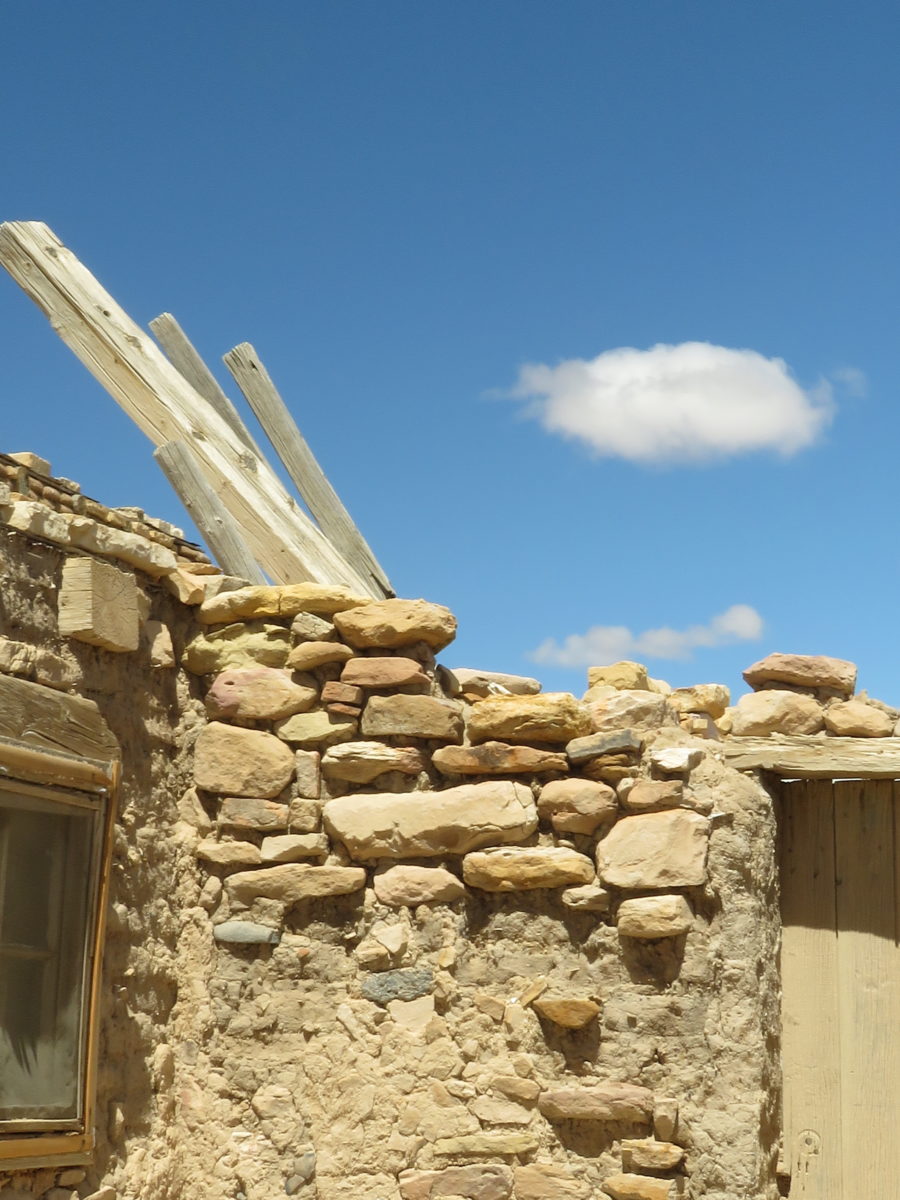
You’ll learn that the communal buildings were multi-storied as another protection; the only way to get in was through a network of ladders to the upper floors, reached through the roof. Once those ladders were pulled up, those inside were protected and could also protect themselves.
Cisterns collected rainwater and food stores from cultivating the surrounding lands, and with only one way up, it ensured they would survive attackers. Hive-like communal ovens are also still scattered through the city.
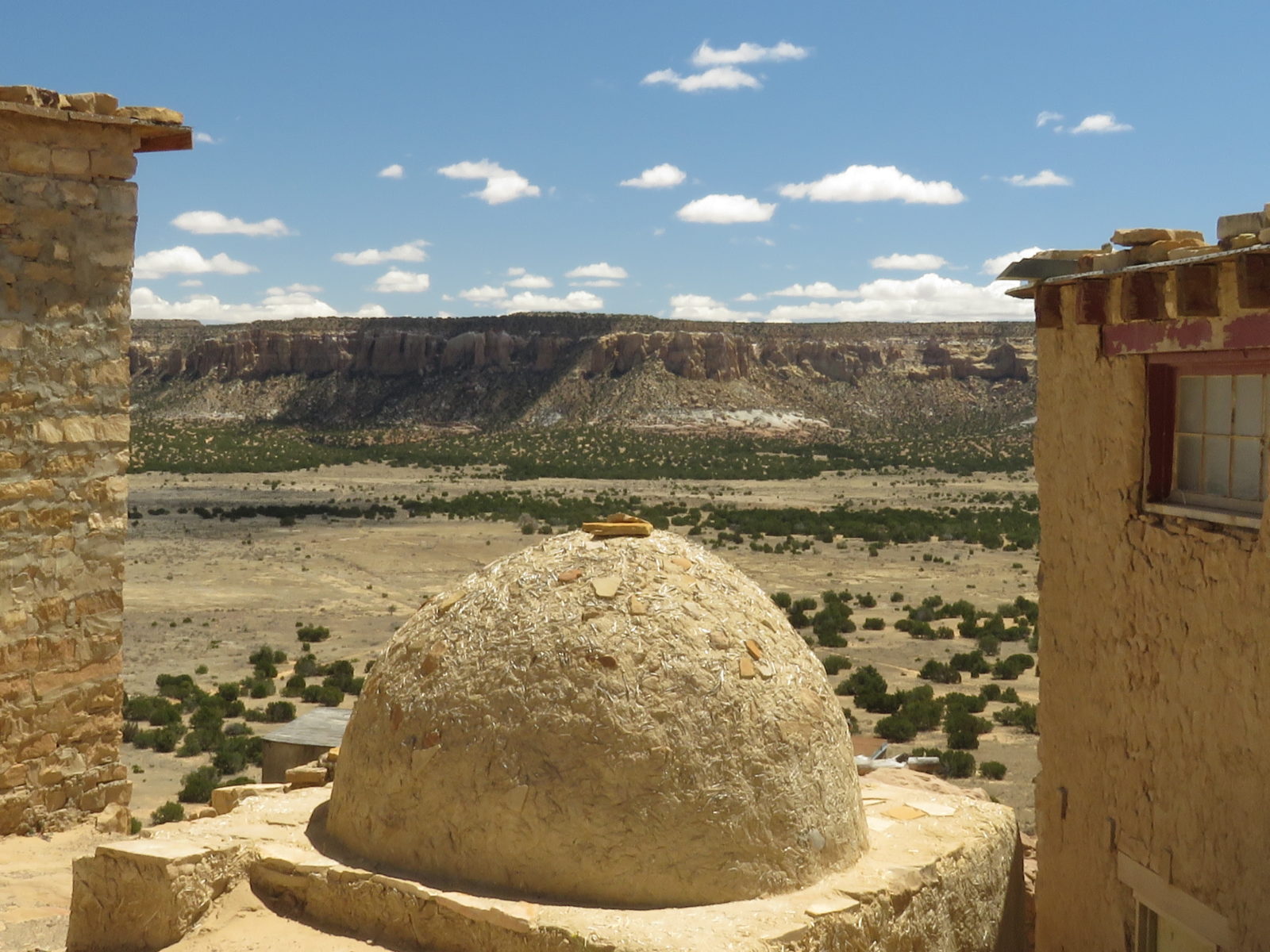
Five hundred years ago the now-arid fields around the mesa were ripe with squash, corn and other crops. The Acoma now raise livestock, and operate a casino near I-40.
When the Spanish returned, according to our guide, they thought Acoma was one of those seven golden cities of Cibola because the mica used in windows here glinted in the sun. Residents were basically enslaved following a three-day battle in which hundreds were killed. Males of a certain age had their right feet cut off and were sentenced to 20 years of servitude. Women were made slaves also for two decades. Children were sent away.
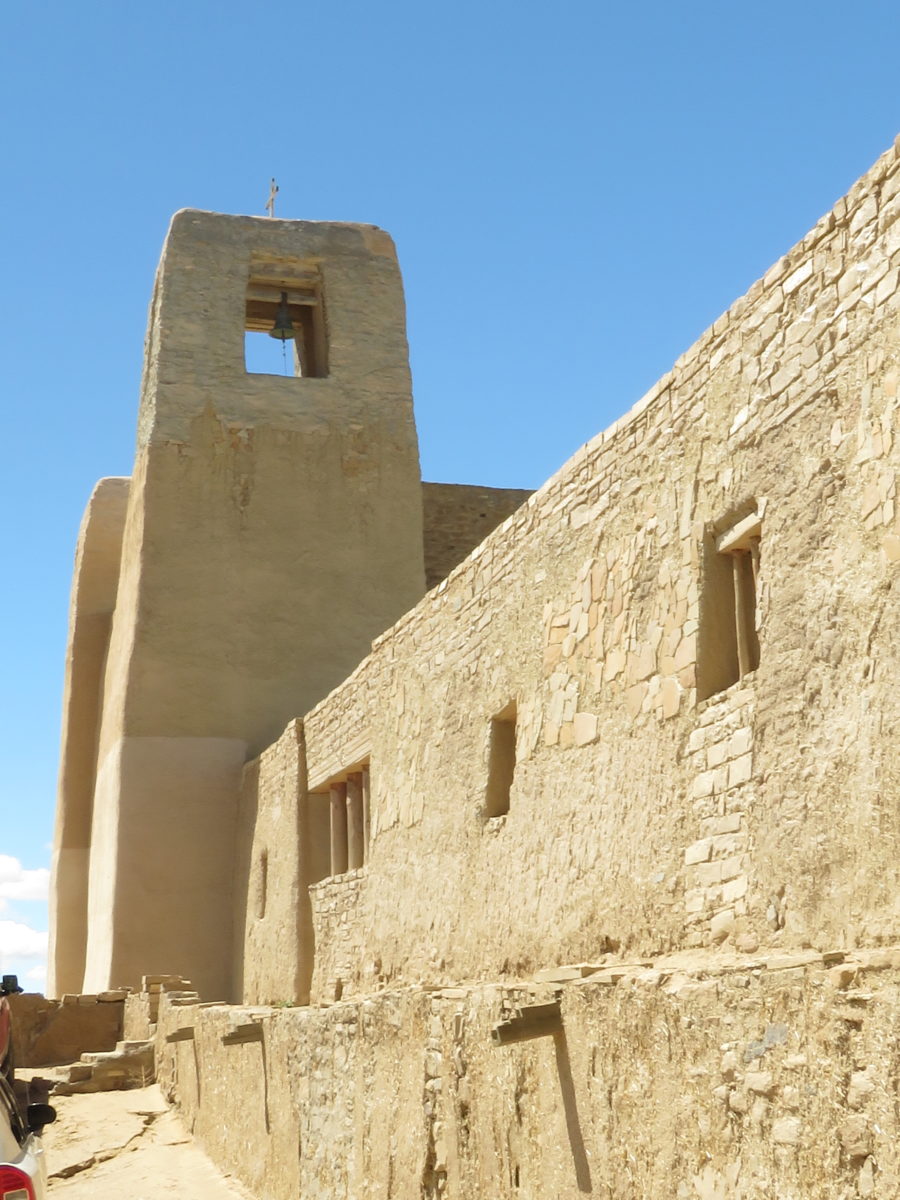
Later, residents were ordered by accompanying Franciscan priests to build the church that sits at one corner near the precipice. Our guide explained that wood beams for the structure came from forests 40 miles away and were carried by hand. If one heavy log happened to touch the ground, it was sacrilege, and the carriers were sent back to get another. Up to 150 died during construction.
Eventually, the church was finished. Today, Acoma practice both Catholicism and their own native religion here Those sites, called kivas, are reached by the large white ceremonial ladders leaning here and there against the buildings.

The locals, however, get the last laugh as tourists and buyers of its world-renowned intricate pottery now walk the uneven stone streets and visit the casino some miles distant along I-40. And in a final stroke of retribution, the Acoma took revenge in 1998 against a plaque put up commemorating the coming of the Spanish. At night, a group took a saw to the plaque, cutting off the right foot of the conquistador depicted on it.
Coronado’s armies may have come through here searching for those seven cities of Cibola, but he missed what the real treasure here was, and still is. You can find that, and hopefully purchase some of its colorful pottery from the artists you’ll meet during your visit.
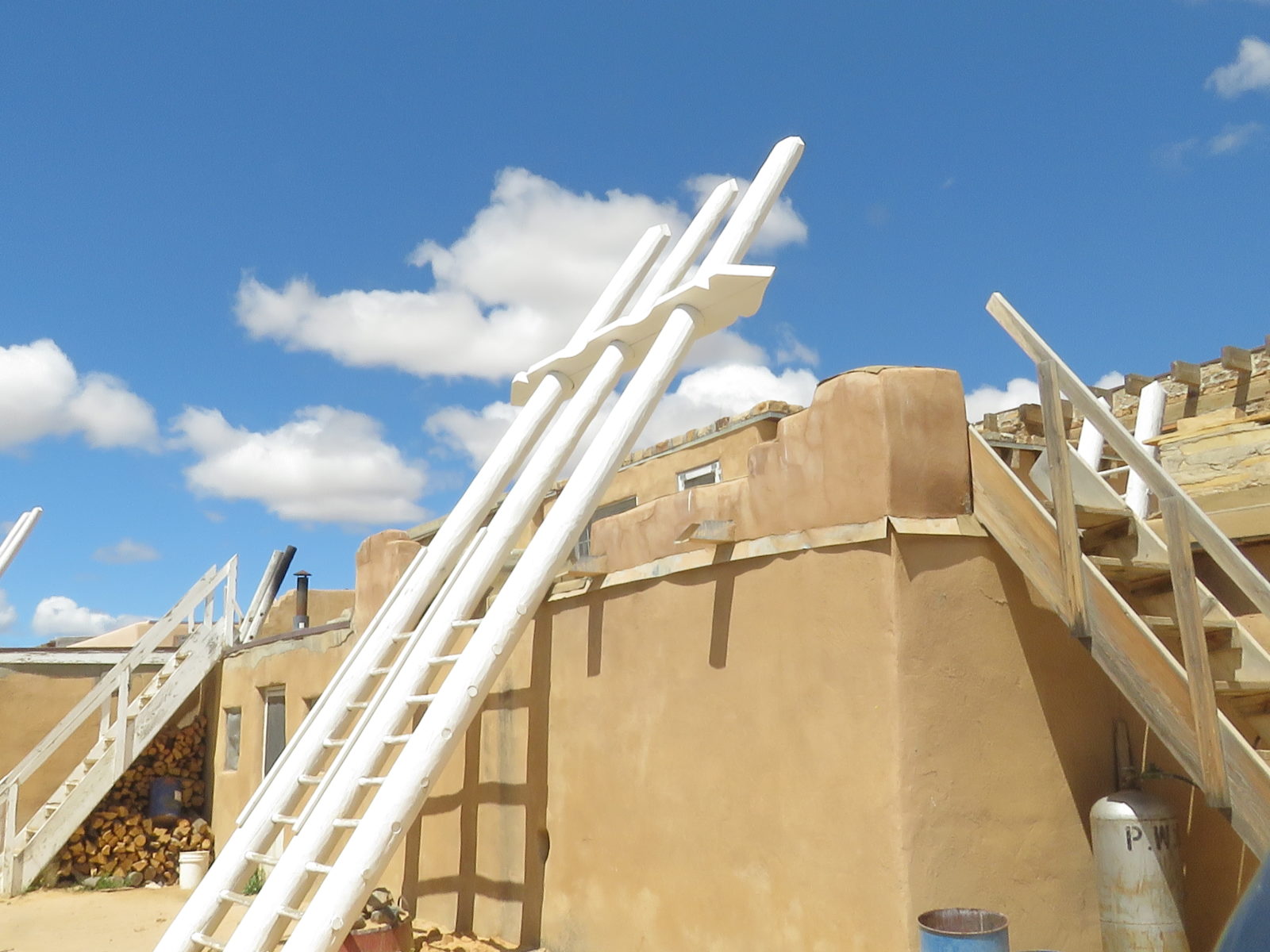
When You Go
Due to Covid, visits to the pueblo have paused. A spokesperson at the visitor center said it’s hoped that the Acoma will again open in spring 2022. Call 800-747-0181, or 505-552-7861 for updates. Here’s a preview of your visit: https://www.acomaskycity.org/page/our_story. Camping is available nearby, including at the Dancing Eagle campground at the casino. Check there for updates as it prepares to re-open, https://www.dancingeaglecasino.com.




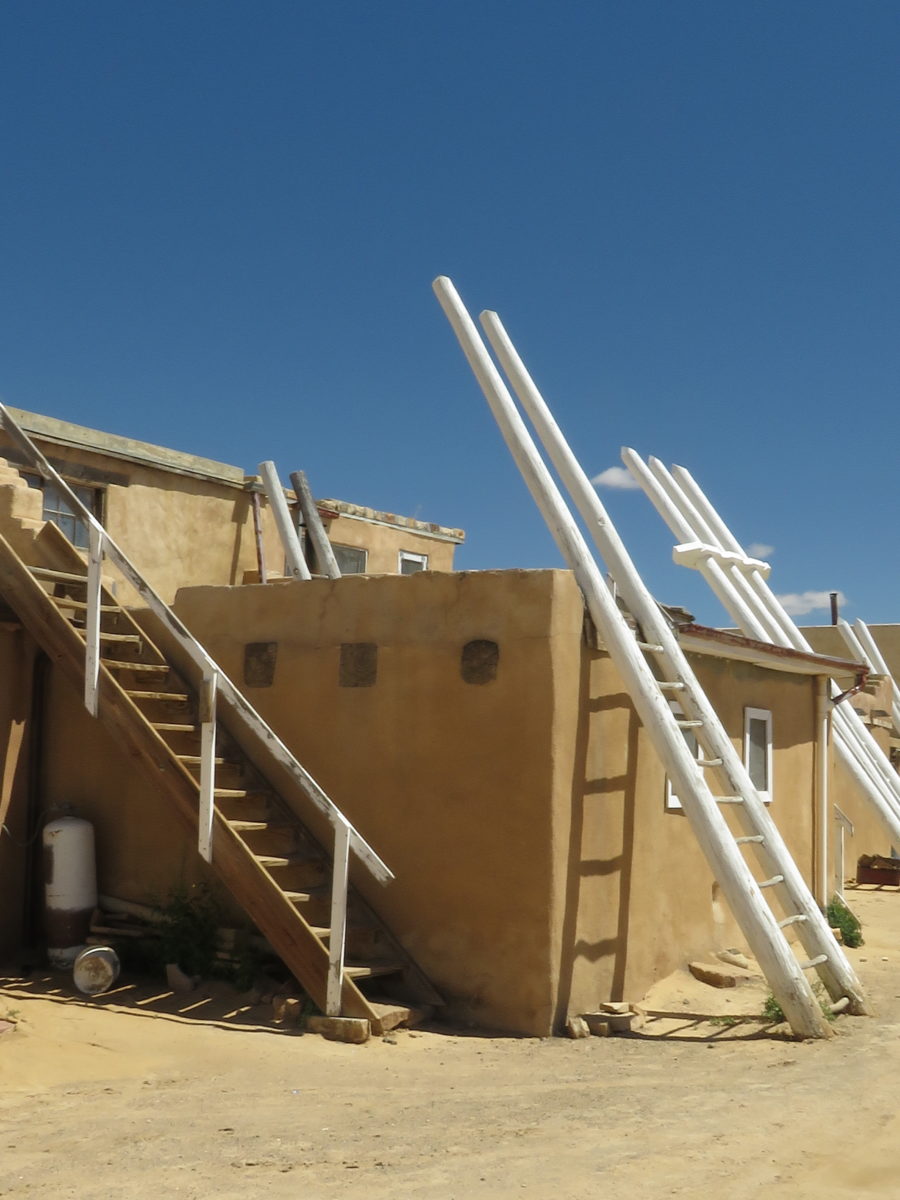



Comments